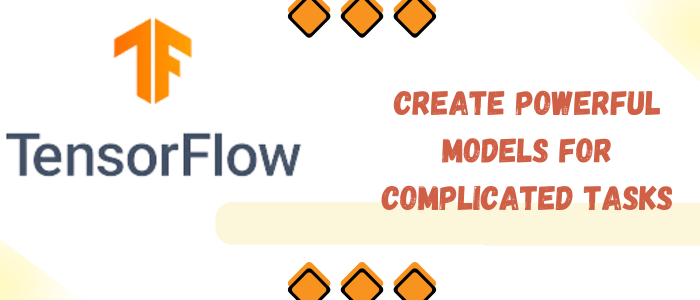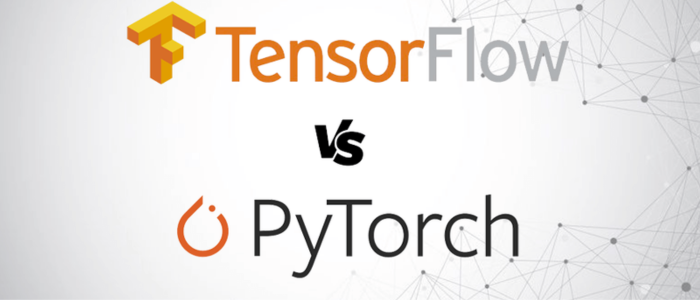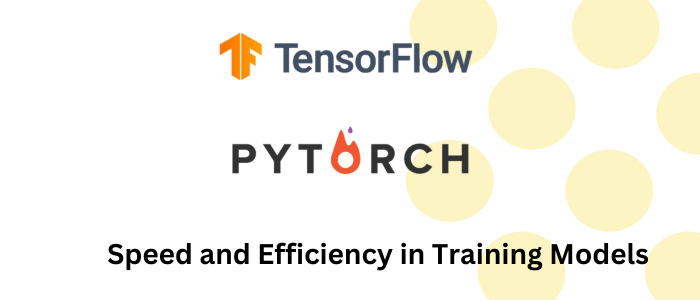Introduction to Deep Learning Frameworks
Deep learning frameworks are important tools that help computers learn from data to solve real-world problems. These frameworks make it easier for people to build, train, and test models for tasks like image recognition, language processing, and more. Two popular frameworks are TensorFlow and PyTorch, and choosing the right one is important depending on your project. TensorFlow vs PyTorch which is the best, here we shall analyze.
What is TensorFlow?
TensorFlow is an open-source deep learning framework developed by Google. It is widely used in both academic research and the tech industry for large projects. TensorFlow’s biggest strength is its comprehensive ecosystem, which includes tools for deployment, mobile support, and more. It allows developers to create powerful models for tasks like machine learning and artificial intelligence.
Ease of Use
PyTorch: Intuitive and Pythonic
One of the reasons PyTorch is so popular is its ease of use. It feels like using Python, which makes it simple for beginners to understand. PyTorch allows you to work with a dynamic computation graph, meaning you can change your model as you go. This is great for experimenting and testing new ideas.
TensorFlow: Comprehensive Ecosystem
While TensorFlow is very powerful, it can be harder to learn at first because it uses a static computation graph. In this setup, you need to define the entire model before running it, which can be tricky for beginners. However, TensorFlow’s comprehensive ecosystem of tools and libraries offers more features for larger, production-ready projects.

Performance
Speed and Efficiency in Training Models
When it comes to performance, both TensorFlow and PyTorch are fast, but TensorFlow sometimes has a slight advantage in training speed. This is due to its support for static computation graphs, which can optimize performance by pre-defining everything. PyTorch is still very fast, especially for tasks that require frequent changes or experimentation.
Real-World Performance
In real-world scenarios, TensorFlow shines in production environments where speed and efficiency are critical. PyTorch, on the other hand, is often used in research settings where flexibility is more important than raw speed.
Community and Support
Community Size and Activity
Both frameworks have large, active communities that provide support through forums, tutorials, and videos. PyTorch is very popular among researchers, who often use it for cutting-edge projects. TensorFlow, due to its longer history, has a broader user base in industries.
Availability of Educational Resources
You can find many online tutorials, courses, and videos for both frameworks. These resources are helpful for beginners who are just starting to learn about deep learning.
Flexibility and Control
PyTorch’s Dynamic Computation Graph
With PyTorch, you get a dynamic computation graph, which means you can adjust the structure of your model while it is running. This is ideal for researchers who want to experiment and test new ideas. You have more control over your model, and you can see immediate results when making changes.
TensorFlow’s Static Computation Graph
In TensorFlow, the static computation graph requires you to define your model upfront. This can make it harder to test new things, but it also makes TensorFlow more reliable for large-scale projects. Once your model is set, it runs efficiently, which is great for production.
Deployment
TensorFlow: TensorFlow Serving and TensorFlow Lite
TensorFlow has advanced tools for deployment, like TensorFlow Serving and TensorFlow Lite. These tools allow developers to deploy models on servers or even mobile devices. This makes it easy to bring machine learning models to real-world applications, such as mobile apps or cloud services.
PyTorch: TorchServe
PyTorch also has a deployment tool called TorchServe, which helps users deploy models in production environments. While not as comprehensive as TensorFlow’s tools, it is still a good option for smaller-scale deployments.
Integration with Other Tools
TensorFlow’s Integration with Keras
TensorFlow integrates seamlessly with Keras, a high-level deep learning library that makes building models even easier. This is especially helpful for beginners who want a simple interface to build complex models.
PyTorch’s Compatibility with ONNX
PyTorch supports ONNX (Open Neural Network Exchange), which allows developers to convert models between different frameworks. This makes interoperability between TensorFlow and PyTorch easier, as models built in one framework can be used in the other without much hassle.
Industry Adoption
Industries Using TensorFlow
Many large companies like Google, Airbnb, and Uber use TensorFlow for their machine learning needs. It is highly regarded in the industry for production environments where large-scale projects are common.
Industries Using PyTorch
PyTorch is more popular in research settings but is quickly gaining traction in the industry as well. Facebook, which helped develop PyTorch, uses it extensively in their machine learning projects.
Educational Resources
Tutorials and Courses
Both TensorFlow and PyTorch offer a wide range of educational resources. For newcomers, plenty of online seminars and courses are accessible. PyTorch is often recommended for beginners because of its simpler structure, while TensorFlow is preferred by those who want to dive deeper into production-level applications.
Learning Curves
PyTorch has a smoother learning curve due to its Python-like interface. TensorFlow, although harder at first, rewards users with a larger toolset for building more complex models.
Interoperability
Converting Models Using ONNX
ONNX is a tool that allows developers to convert models between TensorFlow and PyTorch. This interoperability is a key feature that allows developers to use the best of both frameworks without starting from scratch.
Cross-Framework Usage
With ONNX, you can move models between frameworks to take advantage of specific features in each. For example, you can build a model in PyTorch, then deploy it using TensorFlow’s production tools.
Specific Use Cases
TensorFlow for Large-Scale Projects
TensorFlow is ideal for large projects and production environments. Its static computation graph and advanced deployment tools make it perfect for applications that require stability and scalability.
PyTorch for Research and Experimentation
PyTorch excels in research environments where flexibility and quick experimentation are needed. Its dynamic computation graph allows for immediate feedback, making it great for testing new ideas.
Future Developments
TensorFlow’s Upcoming Features
TensorFlow continues to add new features, such as better support for mobile devices and improved performance for large-scale models. These updates make it even more appealing for industry use.
PyTorch’s Focus on Deployment
PyTorch is also improving, with a focus on better deployment tools and easier use in production environments. These future developments could make PyTorch an even stronger competitor to TensorFlow.
Licensing and Legal Considerations TensorFlow vs PyTorch
Licensing Models
Both TensorFlow and PyTorch are open-source, which means they are free to use. However, businesses should always review the licensing terms to make sure they comply with legal requirements, especially when using the frameworks for commercial purposes.
Legal Considerations
For companies planning to use these frameworks in commercial products, it’s important to understand the legal considerations and ensure compliance with licenses to avoid any legal issues.
Installation Guides
Install TensorFlow
To install TensorFlow, you can use simple commands like:
- pip install tensorflow
- conda install tensorflow
Install PyTorch
For PyTorch, installation is also easy with:
- pip install torch
- You can also explore PyTorch Lightning for more advanced features or use PyTorch Dataloader to handle large datasets effectively.
Conclusion
Both TensorFlow and PyTorch are powerful deep learning frameworks. PyTorch is easier for beginners and great for research, while TensorFlow is better for large, real-world applications.
Whether you’re starting a small project or building something for production, it’s a good idea to experiment with both frameworks to see which one fits your needs.
Call to Action
Have you worked with TensorFlow or PyTorch? Share your experiences in the comments and let us know which one you prefer!
Contact Us for any Question related to this Article.
FREQUENTLY ASKED QUESTIONS
1. What is TensorFlow?
TensorFlow is a deep learning framework developed by Google used for building machine learning models.
2. What is PyTorch?
PyTorch is a deep learning framework created by Facebook, popular for its simplicity and flexibility in research.
3. Which framework is easier to use, TensorFlow or PyTorch?
PyTorch is considered easier due to its Pythonic style and dynamic computation graph.
4. What is a dynamic computation graph?
A dynamic computation graph, used by PyTorch, allows you to change the model structure as you go, making it great for experimentation.
5. What is a static computation graph?
A static computation graph, used by TensorFlow, requires defining the model structure before running it, leading to better performance for large projects.
6. Which framework performs better?
Both TensorFlow and PyTorch perform well, but TensorFlow may have a slight edge in production due to its static graph.
7. Is TensorFlow faster than PyTorch?
In some cases, TensorFlow can be faster due to optimizations in its static computation graph, but PyTorch is very efficient too.
8. What are TensorFlow Serving and TensorFlow Lite?
TensorFlow Serving is used for deploying models on servers, while TensorFlow Lite is used for mobile and embedded devices.
9. What is TorchServe?
TorchServe is a tool for deploying PyTorch models in production environments.
10. Can I convert models between TensorFlow and PyTorch?
Yes, using ONNX, you can convert models between TensorFlow and PyTorch.
11. Which industries use TensorFlow?
Industries like healthcare, finance, and tech companies like Google use TensorFlow for large-scale machine learning projects.
12. Which industries use PyTorch?
Research organizations and companies like Facebook use PyTorch, especially for research and experimentation.
13. Is TensorFlow better for production?
Yes, TensorFlow’s tools and ecosystem make it ideal for deploying models in production environments.
14. Is PyTorch better for research?
Yes, PyTorch is preferred by researchers because of its flexibility and ease of use.
15. Which framework has a larger community?
Both TensorFlow and PyTorch have large, active communities, but TensorFlow has been around longer and has a broader base.
16. Can beginners learn TensorFlow or PyTorch easily?
Yes, both frameworks offer plenty of tutorials and educational resources, but PyTorch is usually easier for beginners to start with.
17. What is TensorFlow’s integration with Keras?
TensorFlow integrates with Keras, making it easier to build models with a high-level API.
18. What is PyTorch Lightning?
PyTorch Lightning is a tool that helps simplify the training process for PyTorch models, making it more scalable.
19. How do I install TensorFlow?
You can install TensorFlow using commands like pip install tensorflow or conda install tensorflow.
20. How do I install PyTorch?
PyTorch can be installed using commands like pip install torch, and additional tools like PyTorch Lightning are available for enhanced usage.



